COLLECTING METHOD OF STAPHYLINOIDS
USING NOMURA-HOIHOI
Japanese “ú–{Œê
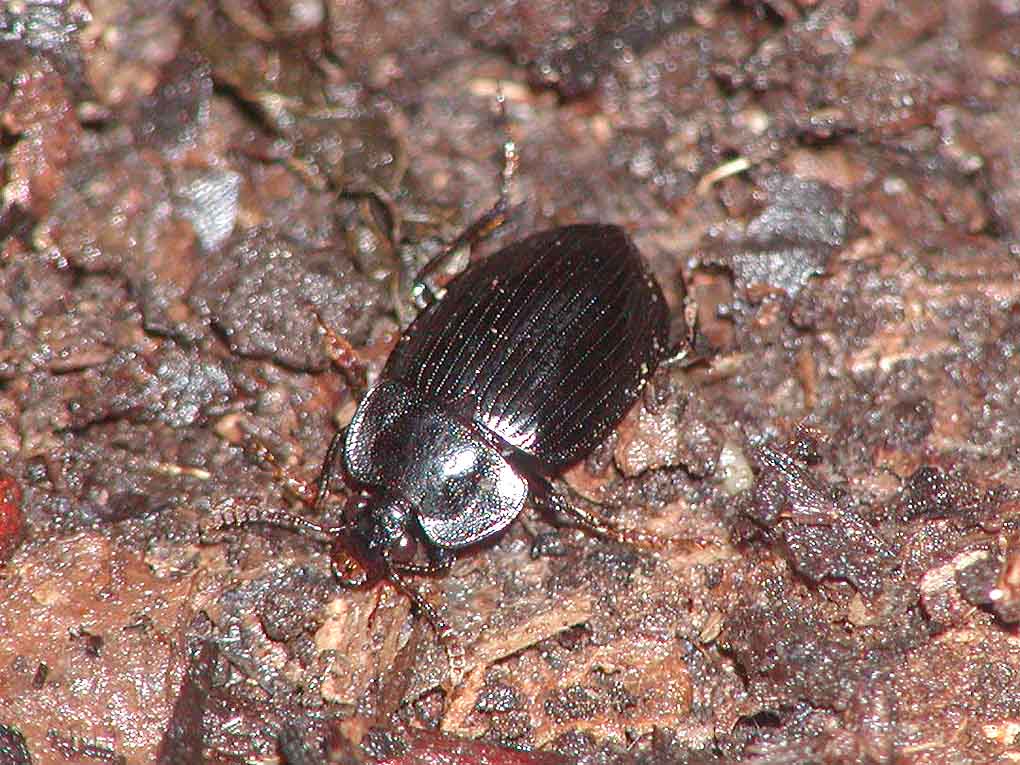
Necrophilus nomurai (Agyrtidae) collected by Nomura-hoihoi with carrion at Amami-oshima Is.
The methods and techniques shown below are merely an entrance. The developper of Nomura-hoihoi, Nomura has not have enough success to collect Staphylinoids by Nomura-hoihoi. But, I try to introduce it here, and I am looking forward to see some new methods for Staphylinoids by the collectors as their needs.
1) Nomura-hoihoi as a banana trap
The same method shown in the page of "techniques" as the part of "Techniques and effects as a banana trap". We can collect many Staphylinoids by this method in a good forest. We can get large Velleius species by banana-traps. Six species of Velleius have been known in Japan, three large and three small. In Kanto district, many specimens of V. dilatatus and V. setosus are sometimes collected by banana-traps. You should be careful these Staphylinoids not to fly away.
Sometimes we can find Nodynus leucofasciatus and Syntelia histeroides at a banana-trap in natural forest. These species are usually attracted to tree sap.
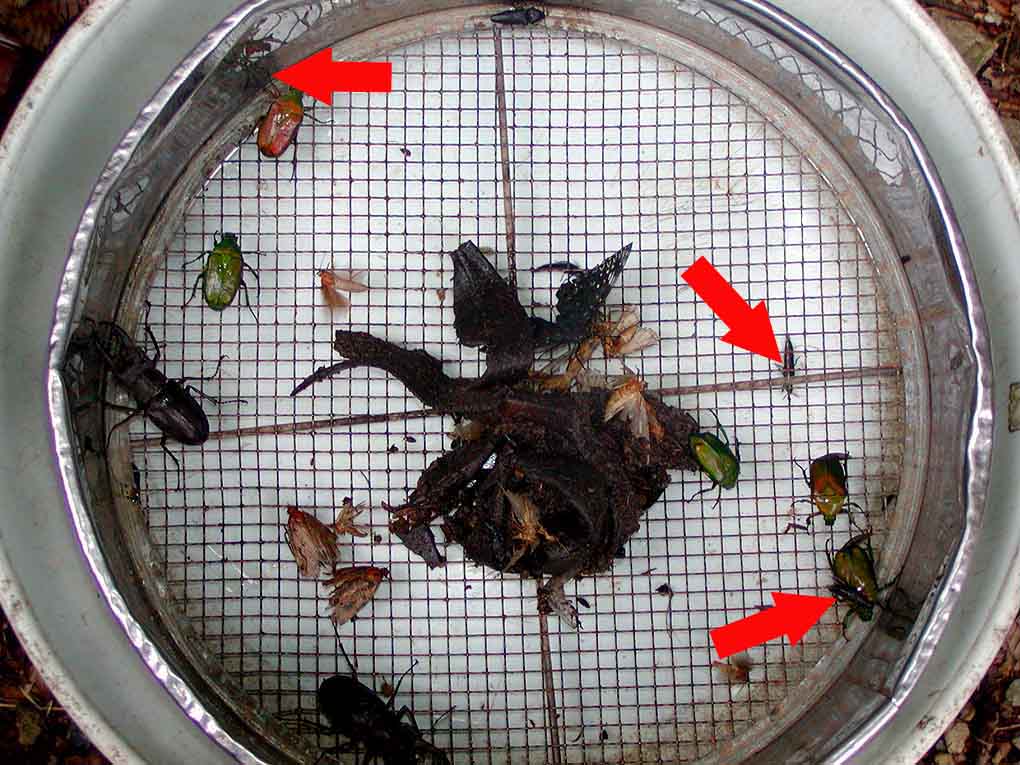
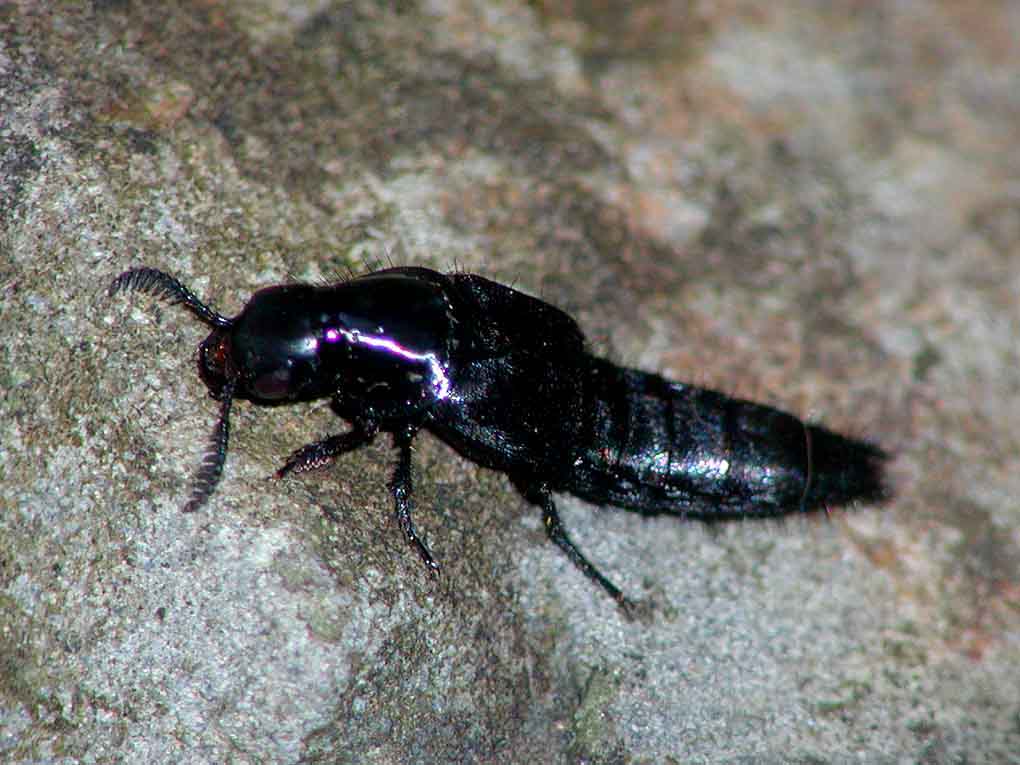
Left: Many beetles collected by banana traps in Yamanashi Pref.;
right: Velleius setosus collected by the same traps.
2) As a Carabus trap
Tha same method as the part of "Carabus trap" using silkworm powder as a bait. It can collect nicrophorine and silphine silphids as well as Carabus. Sometimes we can get Ontholestes or Ocypus staphylinids.
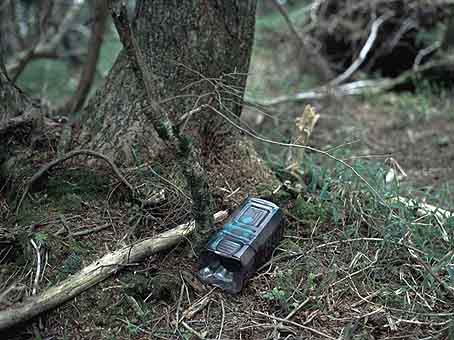
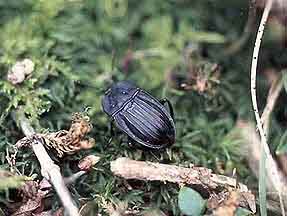
Left: A Nomura-hoihoi settled on the ground in Mt. Sanjogatake, Nara Pref.;
right: Silpha yamatona collected by Nomura-hoihoi.
3) As a carrion trap
The same method shown in the page of "techniques" as the part of "carrion trap". Put an animal meat or bone into a plastic bag, attach it into a bottle, and set it on the ground as a Carabus trap. Several days later, the meat will be decayed, and it can collect many specimens carrion beetles. The kind of meat as a bait depends on the target species. Usually chicken meat is good for many species of Silphidae, Cholevinae and Agyrtidae.
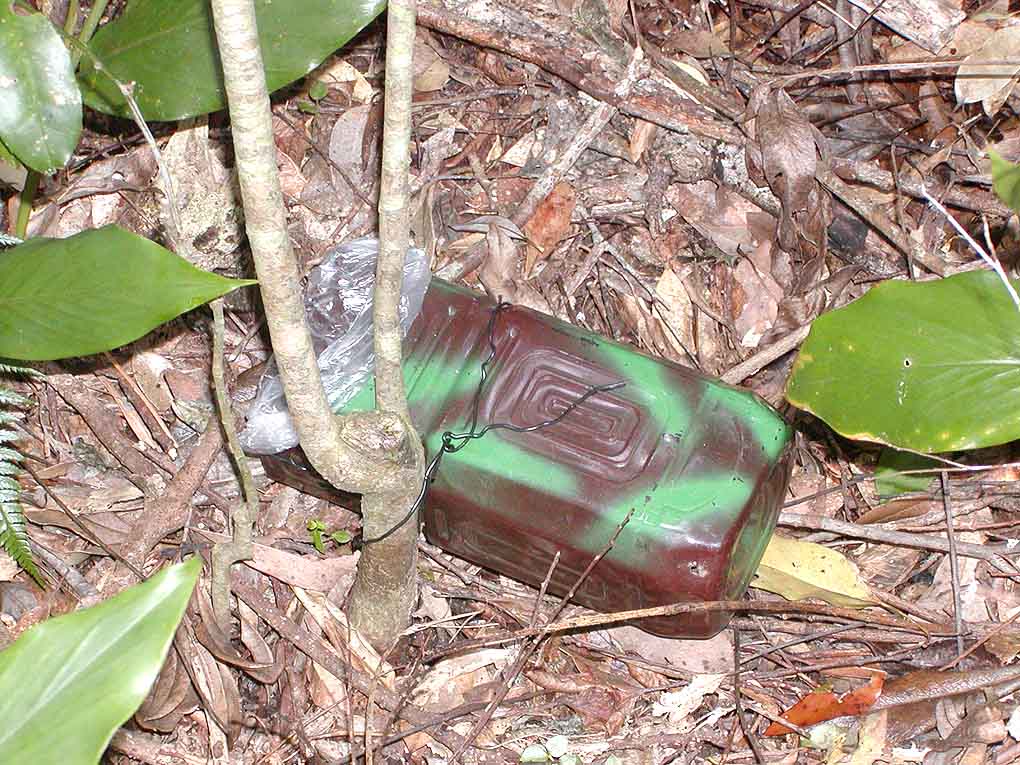
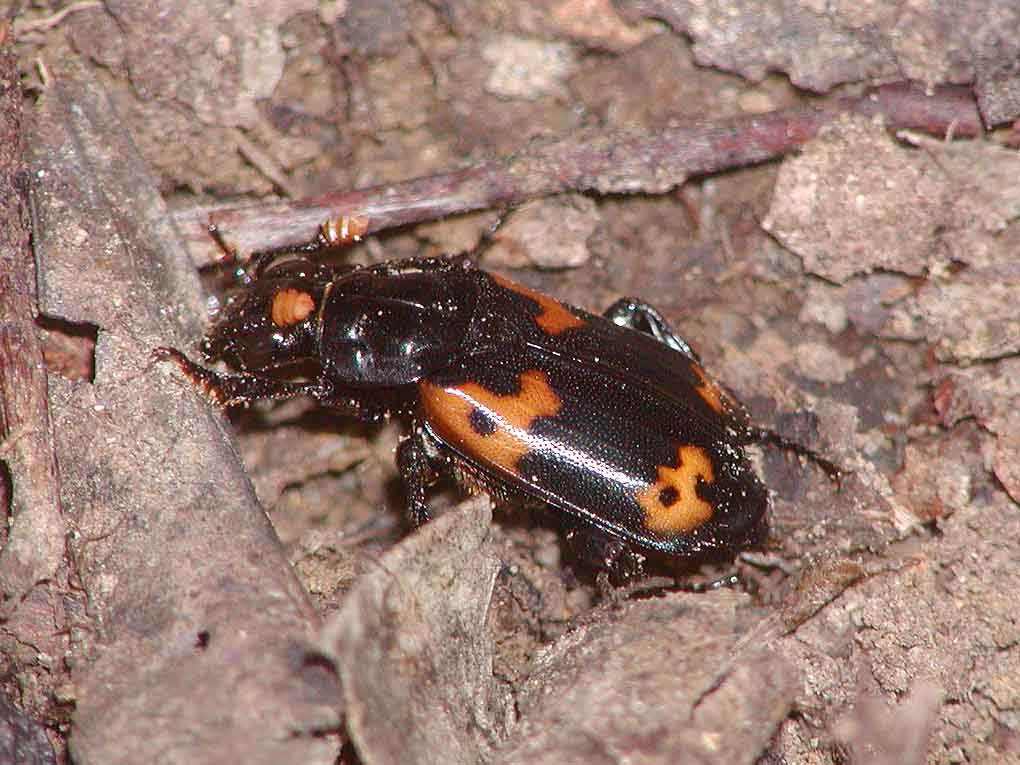
Left: A Nomura-hoihoi using chicken meat as a bait in Amami-oshima Is.;
right: Nicrophorus nepalensis collected by it.
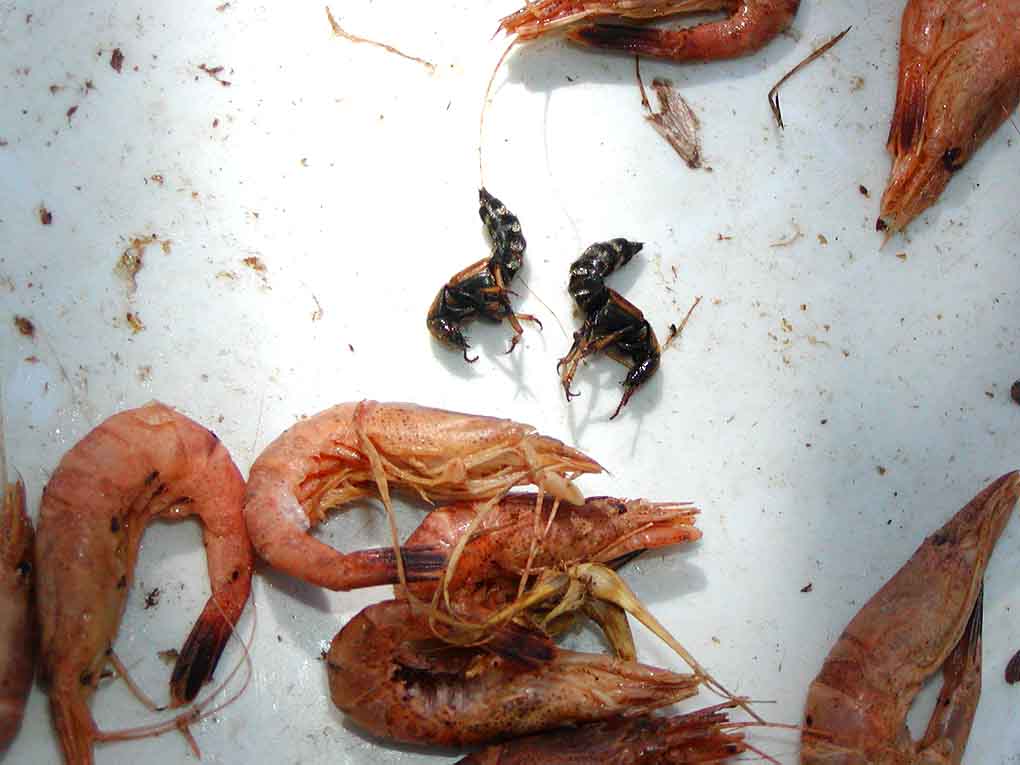
Platydrachus staphylinids attracted by decayed shrimps (not a Nomura-hoihoi) in S France.
4) As a mushroom trap
Many beetles including Staphylinoids are attracted by mushrooms on the ground, or on the rotten logs in the field. We can find more beetles in the night than in the daytime. It looks like a restaurant of insects. How exciting if we can get all of them in a Nomura-hoihoi! But, it is not easy.
We can collect some by a Nomura-hoihoi containing edible mushroom bought in a supermarket. In such a case, we can collect some Staphylinoids attracted by decayed mushroom as Ontholestes or Platydrachus, but it is difficult to get the species attracted by flesh or alive mushroom as Oxyporus or Philonthus. Though, it is important to try it with various bait and in various condition.
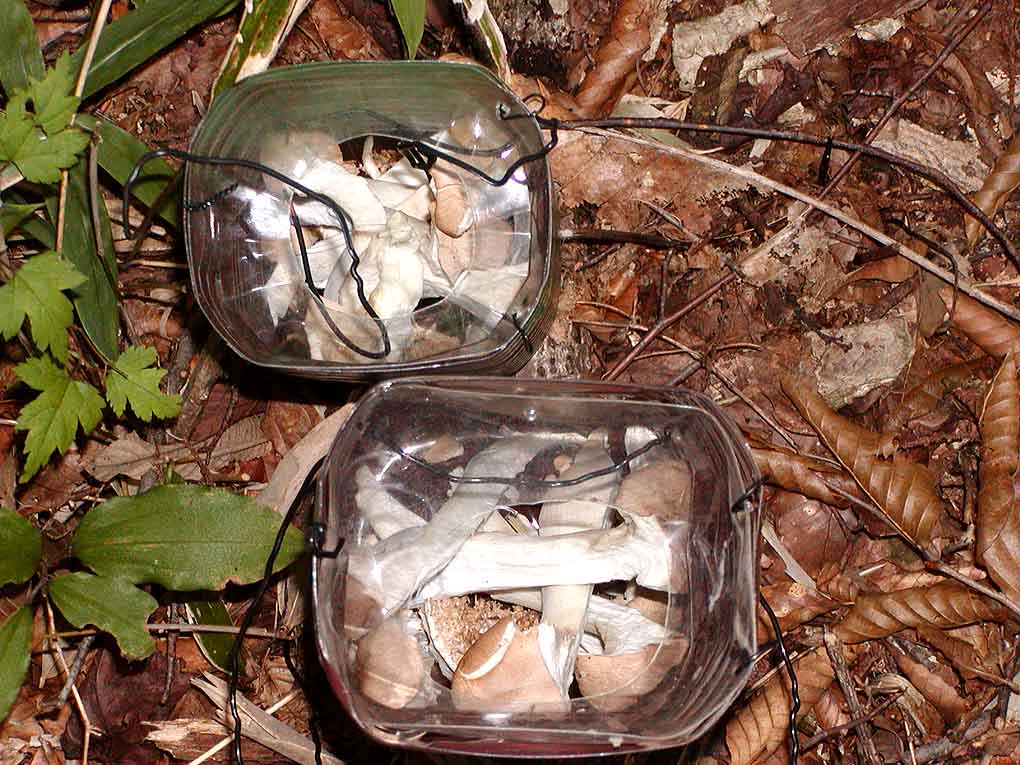
A Nomura-hoihoi containing some edible mushrooms "eringi" settled in Oume-shi, Tokyo.
Back to the toppage